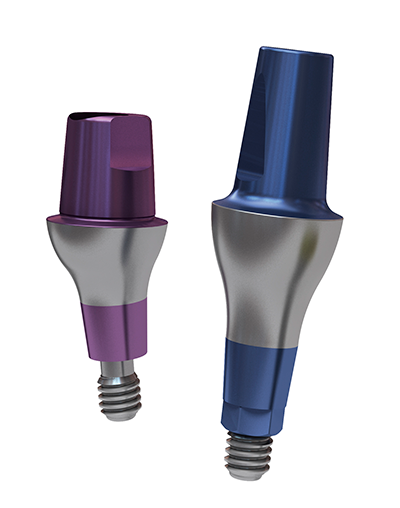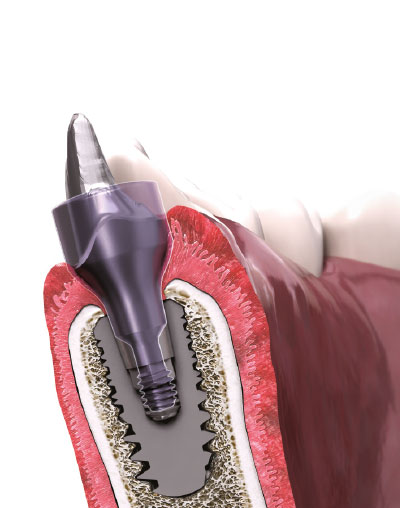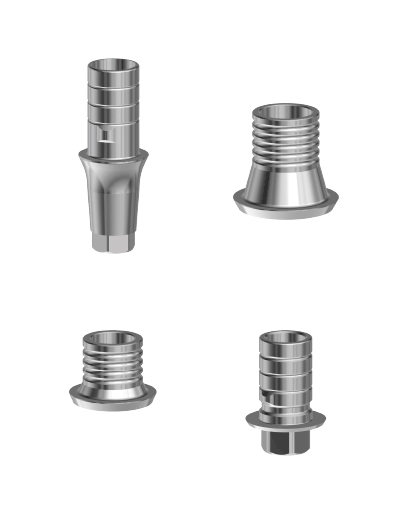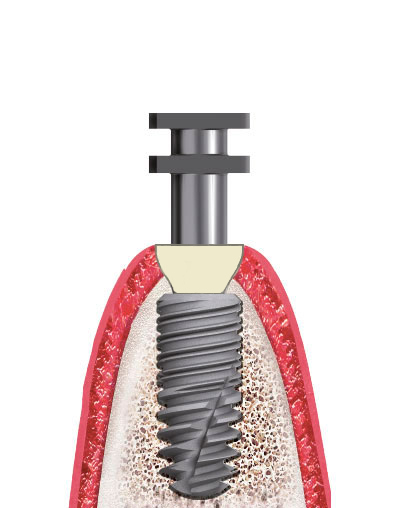The In-Kone® prosthesis range offers a large selection of abutments to meet a wide range of clinical situations. The purpose of the components’ transgingival neck silhouette is to enable development of a maximally extensive and stable mucosal seal.
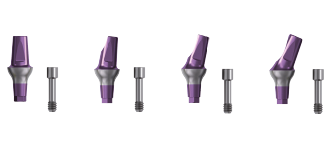
Standard abutments present a symmetrical shoulder that can be partially adjusted to integrate harmoniously with gingival contour irregularities. A colour code indicating periodontal height associates the abutments with different healing screw references to adopt a tension-free emergence profile. They are indicated as a matter of priority for the manufacture of single and multiple cement-retained prostheses. They can also be used in the construction of single screw-retained prostheses.
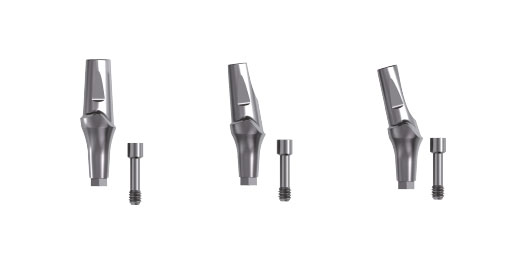
Profiled abutments have an ‘anatomical’ shoulder designed to adapt to periodontal profiles that display asymmetrical thicknesses of the palatine and vestibular mucosae and which are generally encountered in the anterior sector of the maxilla. These abutments are indicated as a matter of priority for the construction of cement-retained prostheses with aesthetic aims.
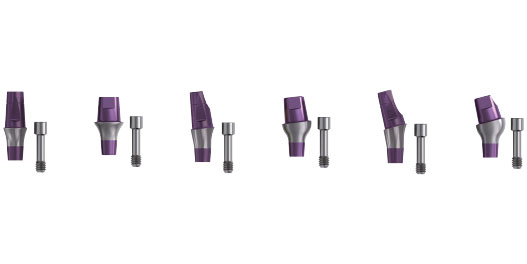
Short abutments are generally indicated for the posterior sectors, which have a smaller oral aperture. Closed-tray impression-taking is performed using an impression cap clipped directly onto the coronal part of the abutment, which is screwed into the mouth beforehand. A protection cap then protects the patient’s tongue while the final prosthesis in being manufactured. Short abutments, available in versions 0°, 7° and 15°, allow the construction of single or multiple cement-retained prostheses.
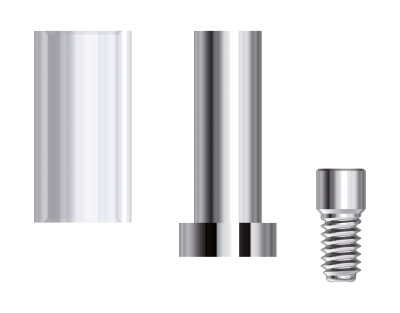
Mixed direct implant sleeves are used for the production of customised abutments for single or multiple cement-retained prostheses and for single screw-retained prostheses. The oxidisable sleeve serves as a basis for the construction of a customised abutment (using the pouring technique, in cobalt-chromium, or in pressed ceramic), to be subsequently bonded to the titanium base of the mixed sleeve. Its use requires having an implant in the prosthetic axis.
